Sigma introduced the Art version (A) of its 24-70mm f/2.8 lens in February 2017, bringing with it the familiar if somewhat subdued cosmetic design of the company’s Art series models, along with optical image stabilization so as to keep up with its rivals.
Sigma says it also updated the optical construction to meet the uncompromising demands of modern, high-pixel-count sensors. The lens thus has 19 elements arranged in 14 groups, with 3 low-dispersion elements to reduce chromatic aberration. The company also claims that they have also adopted high-grade, large-diameter aspherical lens elements to reduce aberrations while at the same time paying close attention to the shape of the bokeh.
At 107.6 x 88 mm (4.2 x 3.49 in) and 1.02 kg (36 oz), however, this Art series version is quite a bit bigger and heavier than the EX model it replaces, which measures 95 x 89 mm (3.73 x 3.5 in) and weighs 0.79 kg (27.87 oz).
Key Specifications:
- Full-frame format
- Available in Canon EF, Nikon F(FX), and Sigma (SA) mounts
- Maximum aperture: f/2.8
- 0.37m minimum focus distance
- 19 elements in 14 groups
- 3 low-dispersion elements
- 9-blade circular diaphragm
- 82mm filter thread
- Weight: 1.02 kg (36.0 oz)
Overall lens image quality
With an overall score of 30 on a 50MP Canon EOS 5DS R body, the Sigma 24-70mm f/2.8 DG OS HSM A improves slightly upon its predecessor, the non-stabilized Sigma 24-70mm f/2.8 IF EX DG HSM.
Our results show that it has much lower lateral chromatic aberration; however, the sharpness of Art series lens is slightly lower than the previous model overall. Although it has better edge sharpness wide-open, levels are restricted at 24mm on account of some astigmatism, and it’s noticeable again at 70mm, where sharpness falls off anyway. It achieved the best results in the middle of the zoom range between the 35 and 50mm focal lengths.
Image quality compared to its competitors
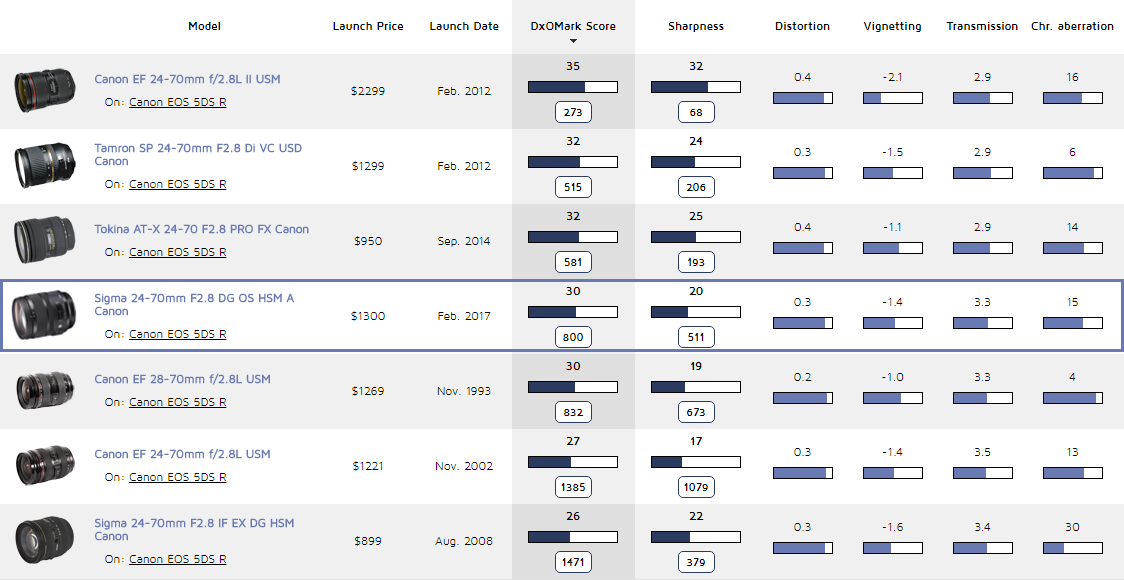
The Sigma 24-70mm f/2.8 DG OS HSM A is very close in performance to its principal rivals. However, its overall score of 30 puts it slightly behind the similarly-priced Tamron SP 24-70mm f/2.8 Di VC USD from 2012 and the Tokina AT-X 24-70 F2.8 PRO FX from 2014. Unsurprisingly, then, the Sigma isn’t a match for the highly-rated Canon EF 24-70mm f/2.8 L USM II, which is significantly sharper and has superior transmission and similarly low levels of chromatic aberration. This is a little unexpected, given what we’ve come to expect from the Art series.
In-depth comparisons
In this section, we’re going to compare the Sigma lens with the Tamron SP 24-70mm f/2.8 Di VC USD lens and the Canon EF 24-70mm f/2.8 L USM II. We tested all three lenses on the full-frame 50MP Canon EOS 5DS R to make the results directly comparable. You can see the results for the Nikon mount version of this lens compared to the original Sigma 24-70mm IF EX DG HSM lens and the stabilized Nikon AF-S Nikkor 24-70mm f/2.8E ED VR here.
Sharpness
When comparing this lens’s results to those of its predecessor, we can see that Sigma has improved sharpness in the outer third of the frame, particularly when wide-open at f/2.8 across the focal range, but it’s not quite so convincing when comparing this model against rivals. We detected astigmatism (where the horizontal and vertical acutance lines aren’t always close) at 24mm in the central two-thirds of the image. Sharpness levels aren’t far behind the Tamron or the Canon across the frame, but it falls away still in the corners.
Astigmatism is also an issue at 70mm, where sharpness levels have fallen well below the Canon and even a little behind the Tamron. The Sigma performs best in the middle of the range and isn’t too far behind the Canon at 50mm, even in the outer third of the image field, but overall, it’s outshone by both. The acutance profile below shows the sharpness profile of the three lenses at their longest focal length and at f/2.8. Closing the apertures down increases sharpness to f/5.6-8. At f/11, the Sigma begins to exhibit some diffraction and scores below 70% acutance.
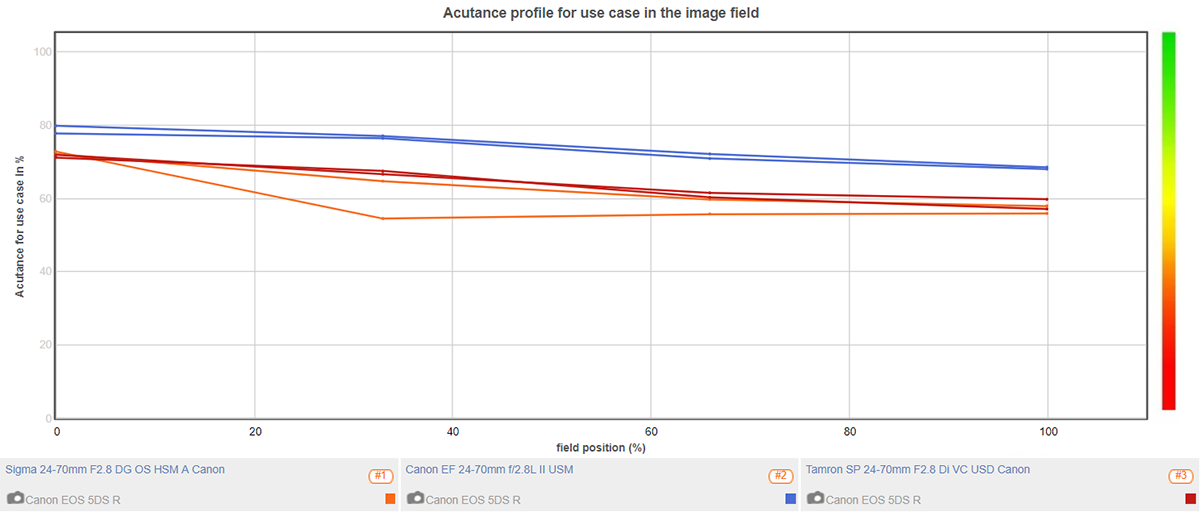
Chromatic aberration
As we discussed in the Nikon mount review of this lens, Sigma has dramatically reduced chromatic aberration in the Art series model over its predecessor, restricting the higher levels (above 10 microns as a rule) to the 24–28mm focal lengths, where it’s typically most difficult to correct.
Although levels are relatively low, both the Canon and Tamron have better control at the 24mm and 70mm focal lengths. The Tamron, surprisingly, is better-corrected than the Canon in this respect, especially at 50mm, where — unusually for the Canon, it has its highest levels and is at its weakest optically. Software can usually remove chromatic aberration when processing RAW files, but its effect on sharpness can be difficult to correct.

The graph above shows the chromatic aberration values at the three models’ widest focal lengths and widest apertures. The Canon is the most highly-corrected and the Tamron isn’t far behind. The Sigma Art series performs well, but displays aberration greater than 10 microns at this focal length at around the 70% mark from the center of the image.
Geometric distortion
In our tests, the Sigma is relatively well-controlled for geometric distortion. It has the same levels of barrel distortion as the Canon from 24mm to 35mm, lower levels of pincushion at mid-focal lengths, and the same level at 70mm. Sigma’s main rival, the Tamron, on the other hand, has higher barrel distortion than both rivals at 24mm (+0.9%). However, it has excellent correction between 35mm at 50mm, with just some slight pincushion towards 50mm, and the same level (–0.5%) as the Canon and Sigma at 70mm.
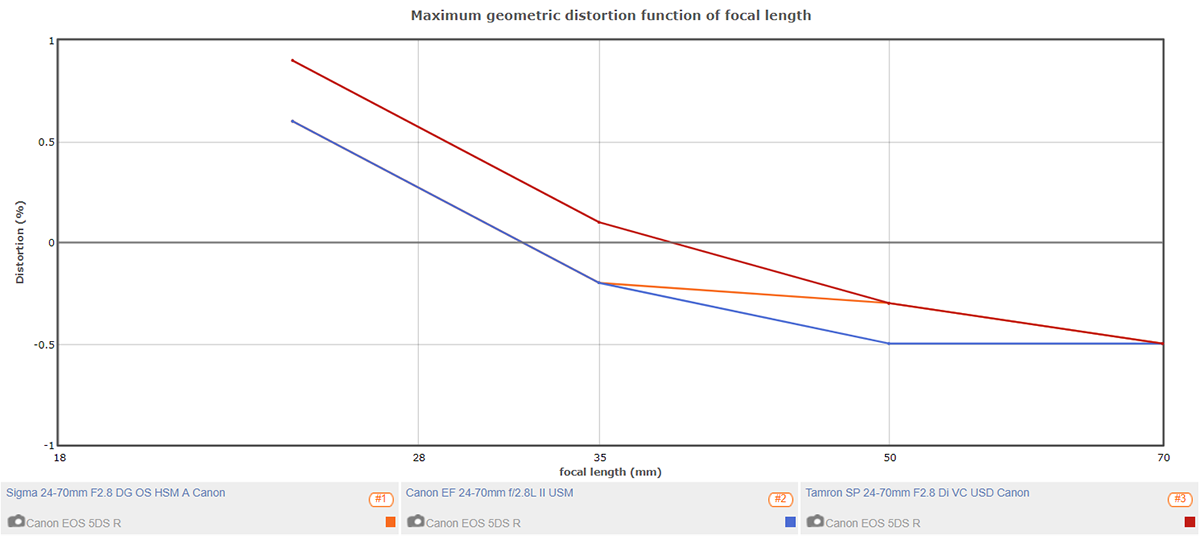
Vignetting
The Sigma shows similar levels of vignetting as the Tamron model at either end of the zoom. From our measurements, the Sigma has a fraction more at 24mm from the central core to the corners, and a practically identical profile at 70mm. However, it is the Canon that has the heaviest and most noticeable vignetting of the three models at 24mm, though as with the Sigma and Tamron, it has a similar profile at 70mm. The graph below shows the degree of corner shading visible in images from the three lenses at their shortest focal length and widest aperture (where it will likely be most noticeable).
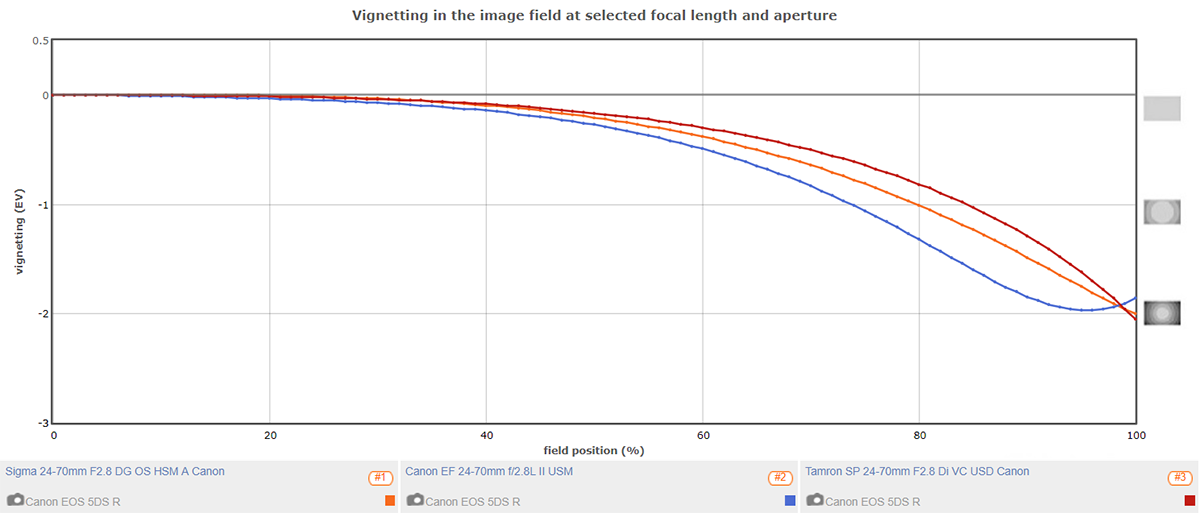
A budget-conscious alternative
For buyers on a tighter budget than the not inconsiderable $1300 required for the Sigma Art lens, there is an alternative. Tokina’s AT-X 24-70mm f/2.8 PRO FX lens, for example, retails at around $950. If you can accept the loss of stabilization and performance wide-open, it has overall performance similar to the Sigma lens, yet boasts slightly higher peak sharpness, excellent transmission, and good control of chromatic aberration.

Conclusion: A solid choice for Canon shooters
Sigma’s Art series models have in the past offered optical quality on par with the best form the marques. While the Sigma 24-70mm f/2.8 DG OS HSM A is an improvement optically over its predecessor, at this point it is unable to match the Canon EF 24-70mm f/2.8L II USM, and really offers only a similar level of quality to that of the 2012 Tamron SP 24-70mm f/2.8 Di VC USD (a lens that’s sure to be updated soon).
Nevertheless, the Sigma 24-70mm f/2.8 DG OS HSM A is a good performer, and we still think it represents good value overall. It has relatively uniform sharpness levels across the frame over all focal lengths, while levels of chromatic aberration, distortion, and vignetting are all well-controlled for a lens in this category.
In this review we have compared the Sigma 24-70mm f/2.8 DG OS HSM A lens to the Canon model and to its most direct rival from Tamron. As usual, you can create your own comparisons and in-depth analyses using our interactive lens comparison tool.


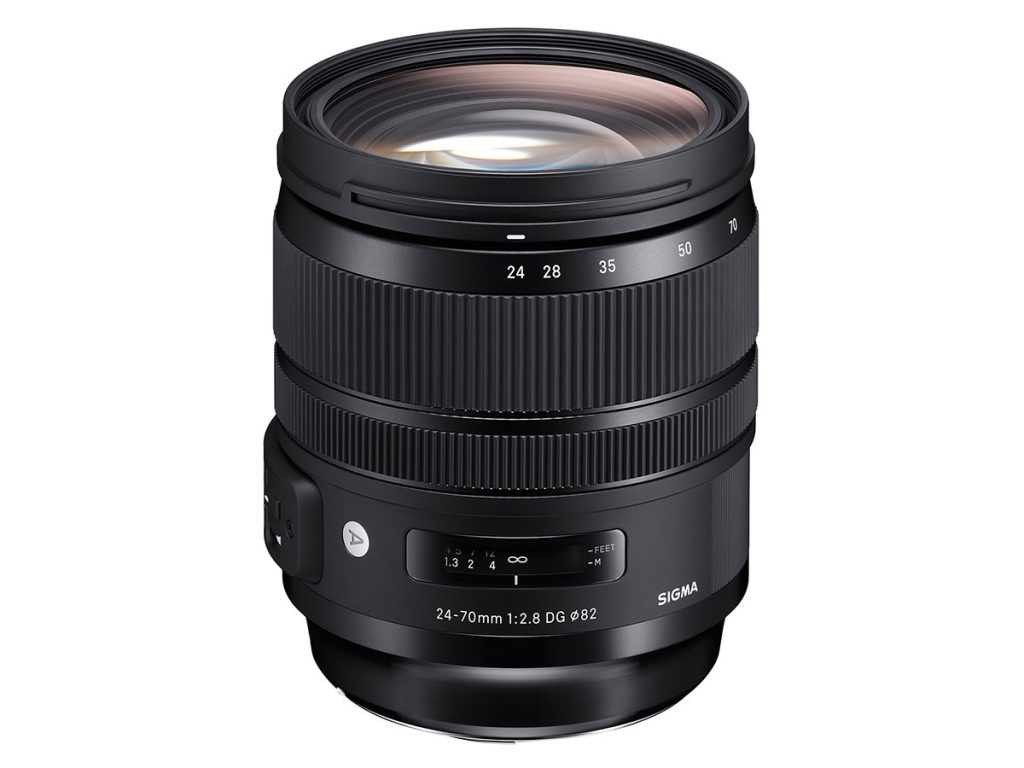



DXOMARK encourages its readers to share comments on the articles. To read or post comments, Disqus cookies are required. Change your Cookies Preferences and read more about our Comment Policy.